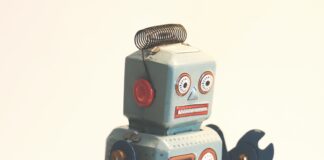The influence of artificial intelligence (AI) in shaping predictive job market trends is revolutionizing the employment landscape. Businesses, policymakers, and job seekers are leveraging AI-driven analytics to anticipate shifts in labor demand, skill requirements, and industry growth. With predictive job market trends powered by big data, machine learning, and natural language processing, organizations can make data-driven hiring decisions, while individuals can proactively prepare for future career opportunities. By understanding predictive job market trends, both employers and job seekers can optimize their strategies, ensuring a more dynamic and efficient workforce. This article explores the top ten essential facts about AI’s role in forecasting job market trends and how it is reshaping the professional world.
1. AI Uses Big Data to Forecast Job Market Trends
AI-driven job market predictions rely heavily on analyzing massive datasets from multiple sources, including job postings, economic reports, company hiring patterns, and government labor statistics. By leveraging big data, AI can identify trends, such as rising demand for certain skills, emerging industries, and shifts in workforce demographics. These insights enable businesses to plan recruitment strategies effectively and help professionals prepare for future career shifts.
2. Machine Learning Enhances Accuracy in Job Market Predictions
Machine learning algorithms continuously improve predictive accuracy by learning from historical employment data. They assess variables such as salary trends, regional hiring fluctuations, and industry growth rates to provide reliable job forecasts. By utilizing deep learning models, AI refines its predictions over time, offering real-time insights into job market shifts.
3. Predictive Analytics Help Businesses Optimize Workforce Planning
Companies use AI-powered predictive analytics to make informed decisions about hiring, training, and workforce expansion. By analyzing historical hiring data and current industry trends, businesses can anticipate talent shortages and address skill gaps before they become critical. AI-driven workforce planning ensures that organizations stay competitive in rapidly evolving job markets.
4. AI Identifies Emerging Job Roles and Skill Demands
As technology advances, new job roles emerge while others become obsolete. AI helps predict which skills will be in high demand and which industries will experience rapid growth. For instance, data science, cybersecurity, and AI-related fields have witnessed exponential growth due to automation and digital transformation. This knowledge allows job seekers to upskill and adapt to market demands.
5. Real-Time Market Insights Guide Job Seekers and Employers
AI provides real-time labor market insights, helping job seekers understand which industries are hiring and what qualifications are most sought after. Similarly, businesses can adjust recruitment strategies based on these insights, ensuring they attract top talent. Platforms like LinkedIn, Indeed, and Glassdoor use AI to match candidates with job opportunities based on their skills, experience, and preferences.
6. AI-Powered Resume Screening Enhances Recruitment Efficiency
Recruitment processes are becoming more efficient with AI-driven resume screening tools. These tools analyze resumes, identify keywords, and rank candidates based on relevance. By automating initial screening, employers save time and resources while ensuring that only the most qualified candidates move forward in the hiring process.
7. AI Predicts Workforce Trends Across Different Industries
AI-powered tools analyze hiring patterns across various industries, offering insights into sector-specific workforce trends. For instance, AI can predict a surge in demand for healthcare professionals during a global health crisis or increased hiring in tech fields due to digital transformation. These forecasts help governments, businesses, and job seekers navigate industry-specific job market dynamics.
8. Ethical Considerations in AI-Driven Job Market Predictions
Despite its benefits, AI-driven job market predictions raise ethical concerns regarding bias and fairness. AI models trained on biased data can inadvertently reinforce existing disparities in employment opportunities. To mitigate this, organizations must prioritize transparency, fairness, and inclusivity in AI-driven hiring decisions.
9. The Role of AI in Remote Work and Gig Economy Predictions
The shift toward remote work and the gig economy has been accelerated by AI’s ability to predict flexible job opportunities. AI-driven platforms match freelancers with projects, forecast demand for remote jobs, and optimize workforce distribution. As businesses embrace hybrid work models, AI will continue to play a critical role in shaping remote job trends.
10. AI Helps Governments and Policymakers Shape Employment Strategies
Governments and policymakers rely on AI-driven labor market analysis to design employment policies and workforce development programs. AI helps identify economic shifts, predict unemployment trends, and inform decisions on job training initiatives. By leveraging AI, policymakers can create strategies that promote economic stability and workforce adaptability.AI-driven Predictive job market trends are revolutionizing the way businesses, job seekers, and policymakers anticipate and react to employment shifts. With Predictive job market trends appearing as a core feature of AI-powered workforce analytics, organizations can gain critical insights into hiring needs, industry disruptions, and emerging skill demands. By leveraging machine learning algorithms and vast datasets, AI can forecast job availability, wage fluctuations, and employment patterns with high accuracy. This not only helps companies make informed hiring decisions but also assists job seekers in aligning their skills with future industry needs. Additionally, Predictive job market trends are instrumental for governments and educational institutions, enabling them to develop policies and training programs that cater to the evolving job landscape. The ability of AI to analyze economic indicators, demographic shifts, and technological advancements ensures that stakeholders can proactively respond to labor market changes, fostering a more resilient workforce and a balanced economy.
Conclusion
AI’s role in predictive job market trends is reshaping how businesses, job seekers, and policymakers navigate the evolving employment landscape. From forecasting emerging job roles to optimizing workforce planning, AI-driven insights offer unparalleled advantages in strategic decision-making. However, ethical considerations and biases in AI must be addressed to ensure fair and inclusive job market predictions. As AI continues to advance, staying informed about its impact on employment trends will be essential for success in the modern workforce. Understanding and adapting to predictive job market trends will empower both individuals and organizations to thrive in an ever-changing professional world.AI in Predictive Job Market Trends is revolutionizing the way businesses, job seekers, and policymakers approach workforce planning. By leveraging machine learning algorithms, real-time labor market data, and advanced analytics, AI can anticipate employment shifts, skill demands, and economic changes with greater accuracy than ever before. Companies can optimize hiring decisions, job seekers can align their skills with future demands, and governments can create policies that support a resilient workforce. As AI continues to refine predictive models, the job market will become more dynamic, efficient, and responsive, ensuring a more prepared and adaptable global workforce.














